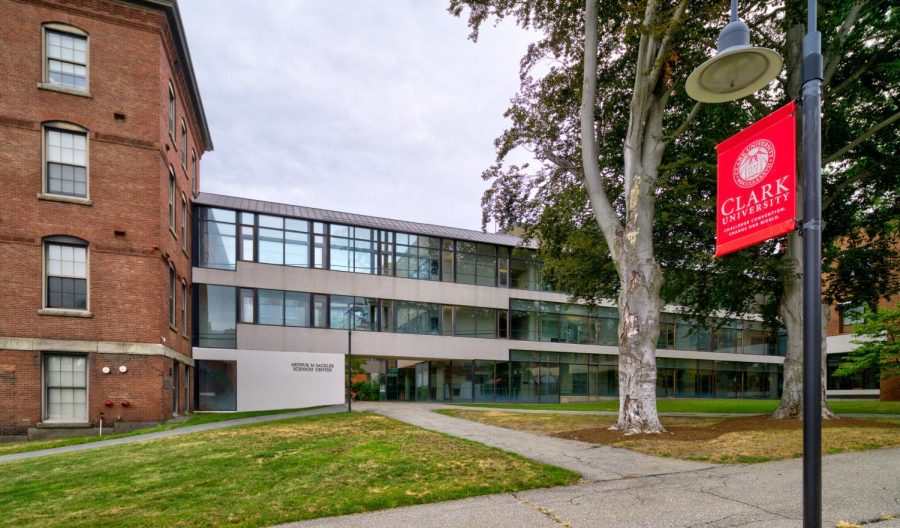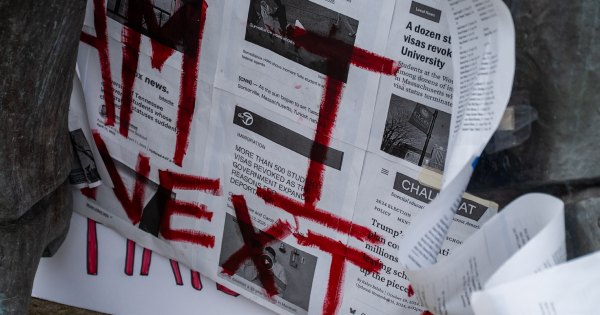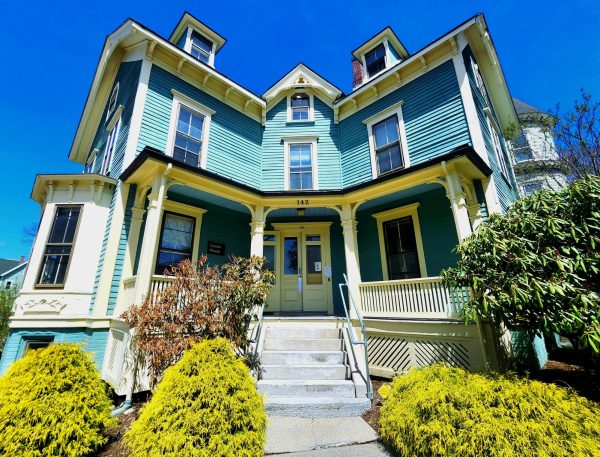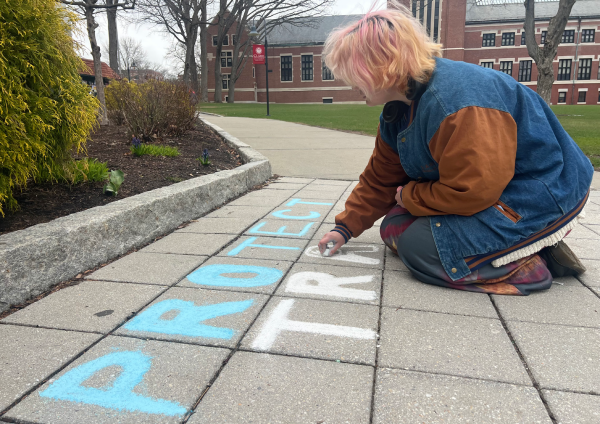“Sack Sackler:” A History and Update on Clark’s Sackler Center
Editor’s Note: This article was originally published in 2019.
The Arthur M. Sackler building lies in the heart of Clark University. The building stands out from every red-brick dorm and lecture hall. Eggshell white paint covers its walls while the parts not coated by paint are lined in four- by five-foot glass panels. Although students can peer in and look at the expensive microscopes and glass beakers in the science labs, the rich and controversial history of opioid abuse and pharmaceutical pay-offs taint its beauty.
In the past five years, I have heard countless news stories of Purdue Pharma. The first time I heard of the “Sackler” name was when HBO’s Last Week Tonight with John Oliver took a stand in talking about the dangers of overprescribing opioids and the coverup and corruption by Purdue Pharma.
The Sackler family is known for founding and owning Purdue Pharma, the inventor and primary manufacturer of OxyContin.
The controversy began in 1985 when Arthur Sackler donated money to Clark to build the Sackler building. OxyContin was manufactured in 1995, and since the development of the prescription pill, the opioid crisis has escalated exponentially.
Clark is not the only institution with ties to the Sacklers. Hundreds of universities and museums worldwide have accepted funds from the Sackler family to expand their locations. Harvard University, Tufts University, the Louvre Museum, the Guggenheim Museum, and the Metropolitan Museum of Art are just a few of the organizations with connections to the Sacklers. In late 2019, Tufts announced that Arthur Sackler’s name would be removed from its Medical School.
Director of Clark Media Relations, Angela Bazyldo, issued the following statement when asked about the Sackler building at Clark: “Clark University has examined carefully the role of Purdue Pharma and the Sackler family in promoting the sale of OxyContin. The Sackler Sciences Center at Clark was built in 1985 with a one-time gift from Arthur M. Sackler. The gift agreement specified that the building bear Arthur Sackler’s name in perpetuity. Arthur M. Sackler died in 1987, eight years before the development of OxyContin. The actions that are under scrutiny regarding OxyContin pertain to other members of the Sackler family, not Arthur nor his family members, who have forcefully condemned the sale and promotion practices of Purdue Pharma. Clark does not have plans to remove his name from the center. We join with those expressing outrage regarding the promotion of OxyContin and the health crisis that these sales practices have caused.”
The director of Planned Giving and Principal Gifts Officer, Mary Richardson, elaborated on the issue: “Clark is contractually obligated to keep the name of the building in recognition of Mr. Sackler’s gift. Neither tradition nor the cost of a plaque are relevant factors as a result,” said Richardson.
“There are occasional cases where a university or other nonprofit organization might consider going to court to break such a contract regarding naming rights for various reasons — most commonly because the gift was not actually made or made in full. It is also important that we be careful and thoughtful in not tarring a particular name with too broad a brush, particularly in situations such as the Sacklers where there are many family members who have been philanthropists over time, and only some of these family members are directly connected to the current controversy around OxyContin.”
So what do Clark students think of the Sackler building on campus?
I asked three students for their opinion of the Sackler building. None of them was aware the Sackler building’s name had ties to the pharmaceutical industry.
A sophomore at Clark, who wishes to remain anonymous, spoke to me about her prescription opioid dependency following an emergency open-heart surgery last year. Following her surgery, she stayed in the hospital for three weeks where she was given an OxyContin pill two or three times a day to cope with the immense pain.
“[Getting off prescription opioids] was very frustrating. The whole opioid crisis issue — I totally get it. It was frustrating because I was in the hospital and that was the only thing that would help. [Nurses and doctors] decided very early on they weren’t going to send me home with any [pills] because of the whole opioid crisis issue. When I left [the hospital], it was a sudden cold turkey stop. I also felt that maybe I didn’t need as much as they were giving me daily. They didn’t really do much once I left to help me slowly wean off of it… They just wanted me to take extreme-strength Tylenol which was not great for severe pain.”
The student explained that her own experience with OxyContin influenced her perspective about the opioid crisis. “After being in the hospital for a few weeks and understanding their effects, I understand how hard it can be to wean yourself off,” she remarked.
In reference to Clark’s Sackler building, she suggested that, even if the name remains the same, there should be more information about the building and its funding.
“I think that Clark should be aware that they are promoting and supporting an industry that’s harmful to a lot of people,” she commented. “Maybe making people aware of where that money came from and the issues that causes, and helping us become more aware of how we can solve those issues and how we can accept the building and have it, because we need it, but how to accept the issues that that causes.”
When asked if she believed the University should take legal action to change the name, she emphasized the importance of first examining the positive and negative impacts of the building.
“I think that if it positively impacted the university more than it would negatively impact the students, then that is something they should consider and look into, especially nowadays where the opioid epidemic is becoming such a big issue,” she said.




